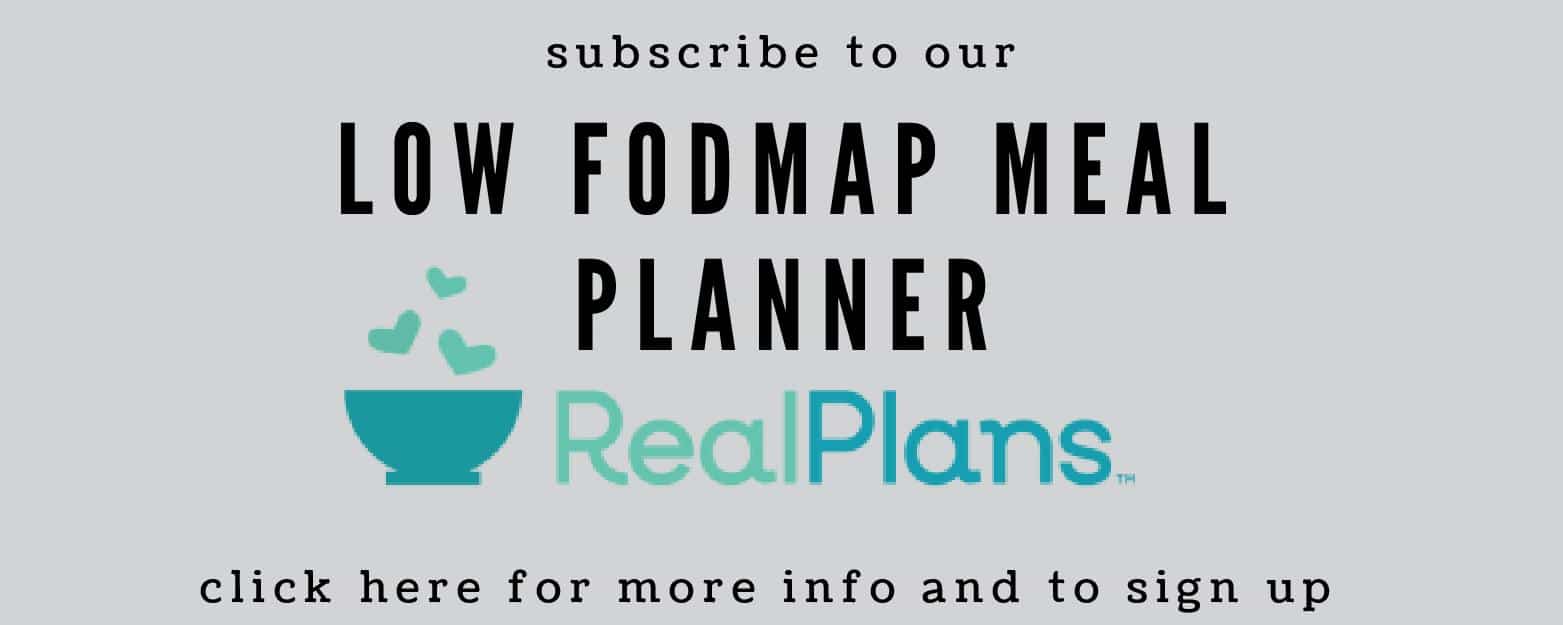Rhubarb (Rheum rhabarbarum) has shown no detectable FODMAPs in Monash University lab tests. The current language in the app (2024) sets the serving at 1 cup (150 g). The small print explains that rhubarb is low FODMAP up to 500 g. (That is over a pound). There are no levels for Moderate or High FODMAP content, and that is related to the fact that in prior lab tests no FODMAPs were detected.
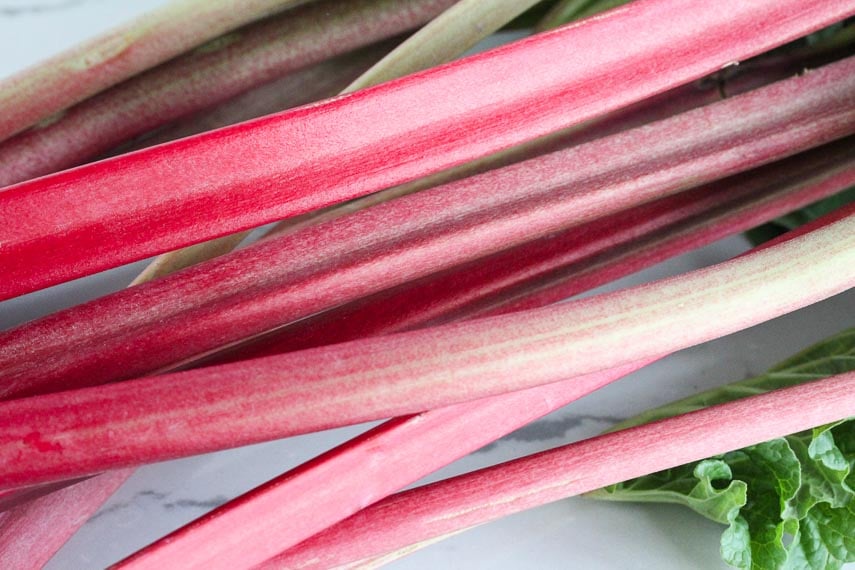
Old Tests Versus New Tests
From time to time Monash re-tests foods, which is fine, except that it leads to a lot of confusion. Most people think that the serving sizes in the app at the current time are the “better” ones, or the “truer” results. This is not the way to look at it, and we explain why in our article, When Low FODMAP Lab Test Results Differ, which we invite you to read. We think it is one of the most important articles on our site.
The older app entry stated that no FODMAPs were detected upon testing, and the serving size suggested was 1 cup chopped (130 g).
The older tests, and the more recent tests, are all reliable. The lab tests show us that it is possible for rhubarb to contain no FODMAPs. Any which way you look at it, none of our recipes comes close to a 500 g serving, so have your rhubarb and enjoy!
FODMAP Friendly has not lab tested rhubarb at this time.
This perennial vegetable, which looks like reddish-pink celery, is most often treated as a fruit. Historically it was known as “pie plant” for the very reason that rhubarb makes exceptional pies (check out our version). It is also related to buckwheat, which is also low in FODMAPs (although you do have to watch your amounts).
It is super tart and most recipes using rhubarb contain a fair amount of sugar. (That said, we kept the sugar to a minimum in our Rhubarb Raspberry Crostata and Strawberry Rhubarb Cobbler).
In the early spring you will find hothouse rhubarb at the market. This rhubarb tends to be deeper red, slender and a bit sweeter. As the season progresses, field grown rhubarb appears and some of it might be triple the width of the hothouse and can range from red to pink to even mostly green. Typically you can find rhubarb available from April through July.
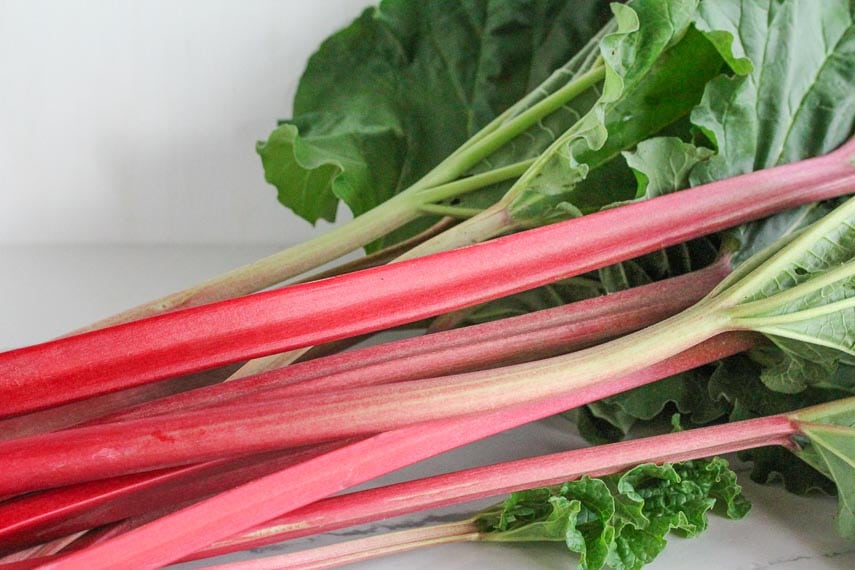
Discard Those Toxic Leaves
The leaves and roots are toxic, containing very high amounts of oxalic acid. This might sound scary, but it is easy to trim them away and just use the stalks, which is what recipes call for.
Nutritionally it is low in calories and contains a good amount of potassium and Vitamin C. It is high in calcium, too, but it binds with the oxalic acid, which prevents the calcium from being readily absorbed.
Rhubarb can have a laxative effect on some, so if you are prone to IBS-D, you might want to tread carefully.
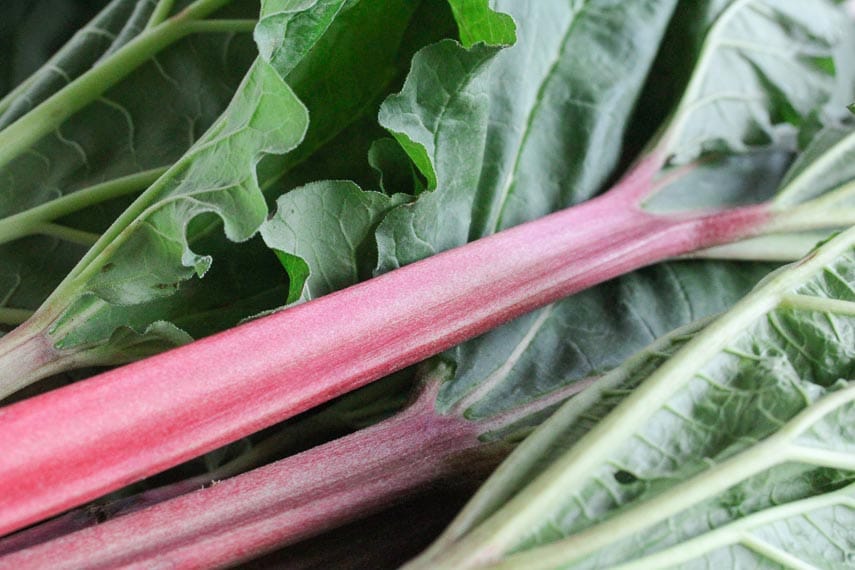
How to Buy
You can’t go by color, as rhubarb can be green, pink or red or a combination and they are all equally ripe. Some say the red varieties are sweeter, but every now and then there seems to be an outlier.
The stalks should be firm, crisp, juicy and be blemish free. If the root end is intact, it will keep longer and this is also a fairly goof indication that it was ripen when harvested.
If leaves are attached, they will be huge! They should look vibrant and not wilted. You will be discarding them, as they are toxic, but they should still look fresh.
How to Store
Refrigerate unwashed rhubarb stalks for up to 1 week. We place them in the crisper drawer. You can just put them in there, or try this trick: loosely wrap with aluminum foil and place in drawer. The foil keeps moisture in, but the loose arrangement allows for any gases to escape. Do not trim or chop until needed or it will dry up.
You can chop it and freeze it in heavy zip-top bags for up to 1 month. It’s really handy if you know what you need for a recipe (say 4 cups or 1 pound/455 g) and freeze in the portions that you will use in any one recipe.
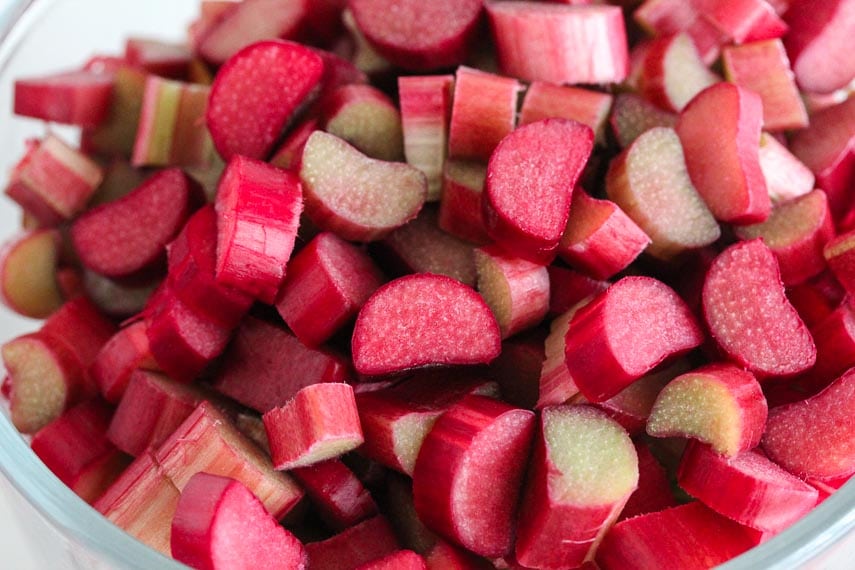
How to Prep
Trim away any leaves and root ends and discard. Wash the stalks with cool water, then dry well. Some very wide and older stalks might be stringy and can be improved by peeling and discarding the outer layer. Proceed as needed in individual recipes.
Low FODMAP Rhubarb Recipes
We have several rhubarb recipes for you, even beverages made with rhubarb, chutney and BBQ sauce!
- Low FODMAP Rhubarb Ginger Syrup
- Fennel Rhubarb Gin Spritz
- Low FODMAP Rhubarb Cheesecake Tart!
- Sparkling Rhubarb Cocktail
- Strawberry Rhubarb Cobbler
- Rhubarb Lattice Pie
- Rhubarb Crumble Ice Cream
- Spiced Rhubarb Chutney
- Rhubarb BBQ Sauce
- Rhubarb Scones
- Strawberry Rhubarb Crisp
- Rhubarb Raspberry Crostata
- Rhubarb Ginger Syrup
- Slow Cooker Pork with Rhubarb BBQ Sauce
